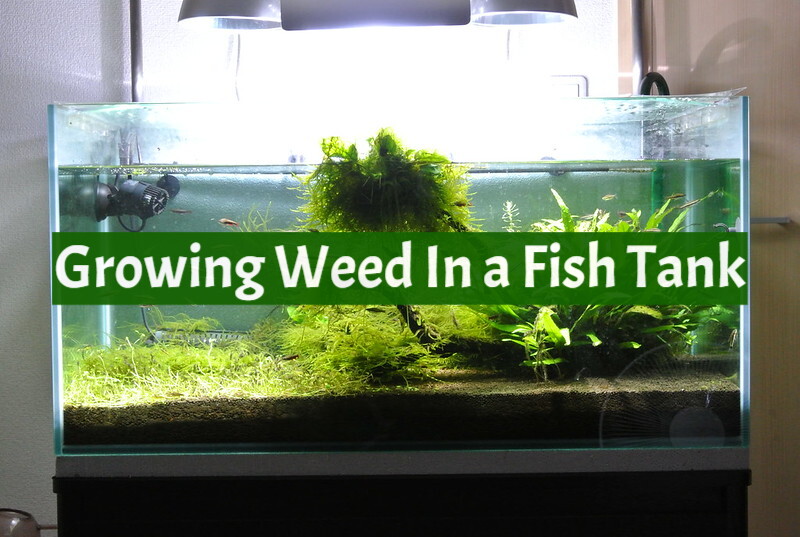We’ve all heard of growing weed in a fish tank, but have you ever considered growing fish in a weed tank?
Growing marijuana in a fish tank is a great way to get started with growing. It’s simple, requires minimal space and can be done on any budget!
We are here to tell you that this is absolutely possible, and it’s a great way to add some fun and interesting things to your garden! Growing weed in a fish tank is easier than you might think. In fact, it’s not even as difficult as growing other plants.
Fish Tanks Are Better for Growing at Home
If you’re considering growing your own marijuana plants at home, a fish tank is the way to go. Fish tanks are easy to use, clean, maintain and hide. They have a low profile that makes them perfect for indoor cultivation.
A fish tank can easily be modified with grow lights and air pumps so that it can be used as a grow room. It’s also possible to use the water from your fishtank as nutrient-rich liquid fertilizer for your plants!
The only downside of using a fish tank as a grow room is its relatively small size; but if you’re just starting out then this shouldn’t matter too much since you won’t need too much space anyway!
Fish Tanks Are Easy to Use
If you’re looking to grow marijuana, a fish tank is an excellent choice. Fish tanks are easy to use and can be used in conjunction with other methods of growing, such as hydroponics. The same goes for growing cannabis—you can use both methods together if you’d like!
Growing cannabis in a fish tank might sound strange at first, but once you try it out and see how well it works (and tastes), we think you’ll agree that it’s not only effective but also fun!
The Benefits of Growing Marijuana in a Fish Tank
It’s a great way to grow weed in small spaces, and it’s also cheap. You don’t have to worry about watering or lighting the tank. There are no fans or air conditioners needed for your fish tank to stay cool, because the water does all of that for you. And since you’re growing multiple plants in one fish tank, it cuts down on costs even more!
There are many benefits of growing marijuana in a fish tank:
- It’s easy to maintain! Since there are no fans or air conditioners needed for this type of setup (the water does all of that itself), you can spend less time worrying about making sure everything is working properly—and more time enjoying what nature has given us!
- Discreetly growing marijuana indoors means that no one will know what you’re doing unless they come over and look at your plant(s). Even then, they might not realize what they’re seeing until they get close enough—so now we’re talking about being discreet while hanging out with friends too?! Seems like we’ve got ourselves quite an advantage here…
Tips for Growing Weed in a Fish Tank
- Use a good quality fish tank. If you want to grow your own cannabis in a fish tank, it’s important to use the best materials possible. The way you build your device will determine how well-made it is and how successful it is at growing weed. Don’t just buy any old tank; get one from a reputable brand like Marineland or Fluval. If you don’t have access to these brands at your local pet store, check online for deals on aquariums and accessories so that you can find one at an affordable price.
- Use a good quality filter for oxygenation of water with added carbon dioxide supplementation from the air pump (if needed). Oxygenating water in this way helps keep plants healthy since they need plenty of O2 to thrive—and no CO2! If not enough does get into their roots through photosynthesis or diffusion through air bubbles created by pumps then additional means must be employed such as using an airstone placed inside basket containing plant roots near bottom edge where most bubbles collect after being emitted by pump itself (see diagram below).
Grow Lights to Use in a Fish Tank
The best grow lights are a great way to grow weed at home. They’re easy to use, affordable, and they can be used in a fish tank.
The best grow lights for starting seeds and seedlings indoors are compact fluorescent bulbs (CFLs). These should have the following characteristics:
- They should provide full-spectrum light (most growers prefer this)
- The light output should be between 5000 Kelvin and 6000 Kelvin
Conclusion
If you have the right tools and know what you are doing, you can succeed. The main thing is patience. You’ll need to give it time before your plants start showing signs of growth and flowering. But once they do, there’s nothing stopping them from reaching their full potential—if all goes well!

